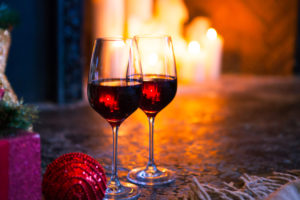Do some exploring for your holiday wine list

Every year, right about now, magazines and newspapers across the country publish wine stories about which wine pairs with your holiday meal. I grew up in a large, multigenerational family with each arm of the family arriving and contributing a course or two to the feast. Which wine pairs with an assemblage of different dishes? Nothing and yet everything. There is no wine that will merge with every dish or every palate at the table. I use these holiday get-togethers to introduce little-known grapes and to sample and learn.
People tend to choose their wine in one of three ways ”“ by price, by grape or by region. If a Spanish wine from La Rioja region worked once, it”™s likely to be chosen again. If an Argentine Malbec satisfied before, you can bet it”™s on the short list again. And if a few more dollars spent brought extra excitement to the glass, that might be the preferred method. There are literally thousands of different grapes growing that all have a taste profile and personality worth discovering and possibly investing in.
Doug Frost wrote a great book on wine called ”“ of all things ”“ “On Wine.” In 2001, at the time of publishing, he was a master sommelier and a master of wine, one of only three people in the world holding both lofty titles. He writes in a casual, yet authoritative, professional voice designed to de-mystify and simplify the world of wine. Early on in the book is a 23-page section with lots of photographs, “Grapes, the Flavor Finder.” He writes a simple paragraph on each of 80-plus wines that gives typical descriptives of what each grape is known for, what flavors it is likely to deliver and what the wine is likely to compare to.
It’s likely that at least half of the grapes described there will be unknown to most readers and that”™s the point. Unknown grapes or unknown regions are almost always where you can discover lovely grape profiles at an attractive price to entice you. Look for a Bourboulenc from the Southern Rhône region of France, a Grüner Veltliner from Austria or Germany, a Sagrantino from Umbria, Italy, or a Mourvèdre from Spain or Southern France. Of course, there are dozens more to tempt you and expand your world of wine.
And don”™t forget some kind of after-dinner wine. There are so many options. Look for an ice wine from grapes harvested after below-freezing temperatures fractured the grape skins, spilling some of the liquid and enhancing the flavors of the remaining grapes. Try an Italian Passito wine in which the grapes are picked and air-dried in baskets, which also concentrates flavors. Look for a late-harvest wine in which the grapes remain on the vines as the sugar increases. Many regions, notably Sauterne in France, can get affected by a fungus called botrytis which shrivels and concentrates flavors to a wonderful mouthful of honeyed sweetness. And the fortified wines of the world will absolutely keep the celebration going. Port, Sherry and Madeira all have different styles and flavors. Sherries can be bone-dry, ultra-sweet or anything in between, so choose wisely for your preferences. Sparkling wines also are appropriate and welcome both before and after a celebratory meal. Cheers to all and may all your holiday blessings be fulfilled.
Write me at doug@dougpaulding.com.